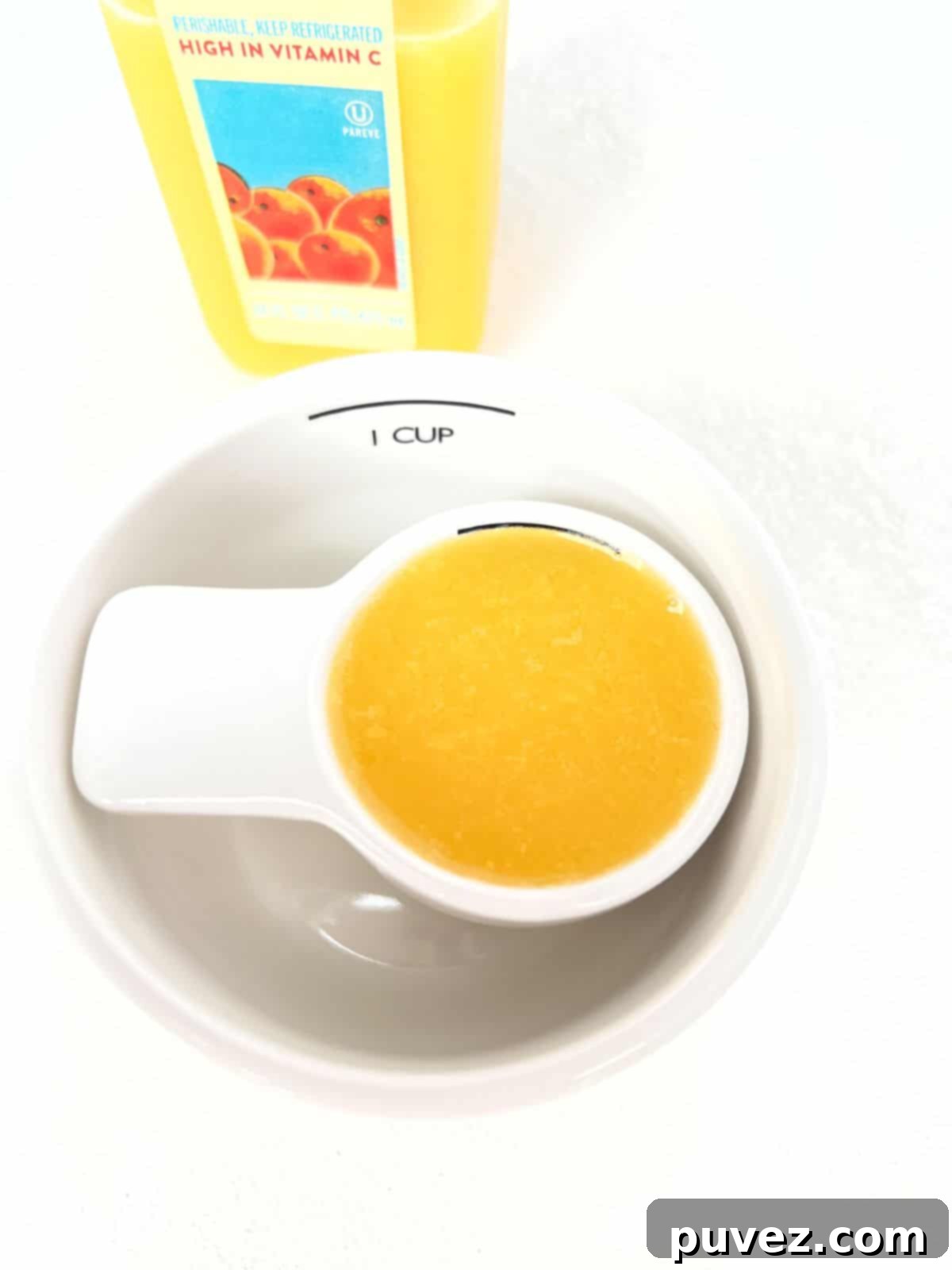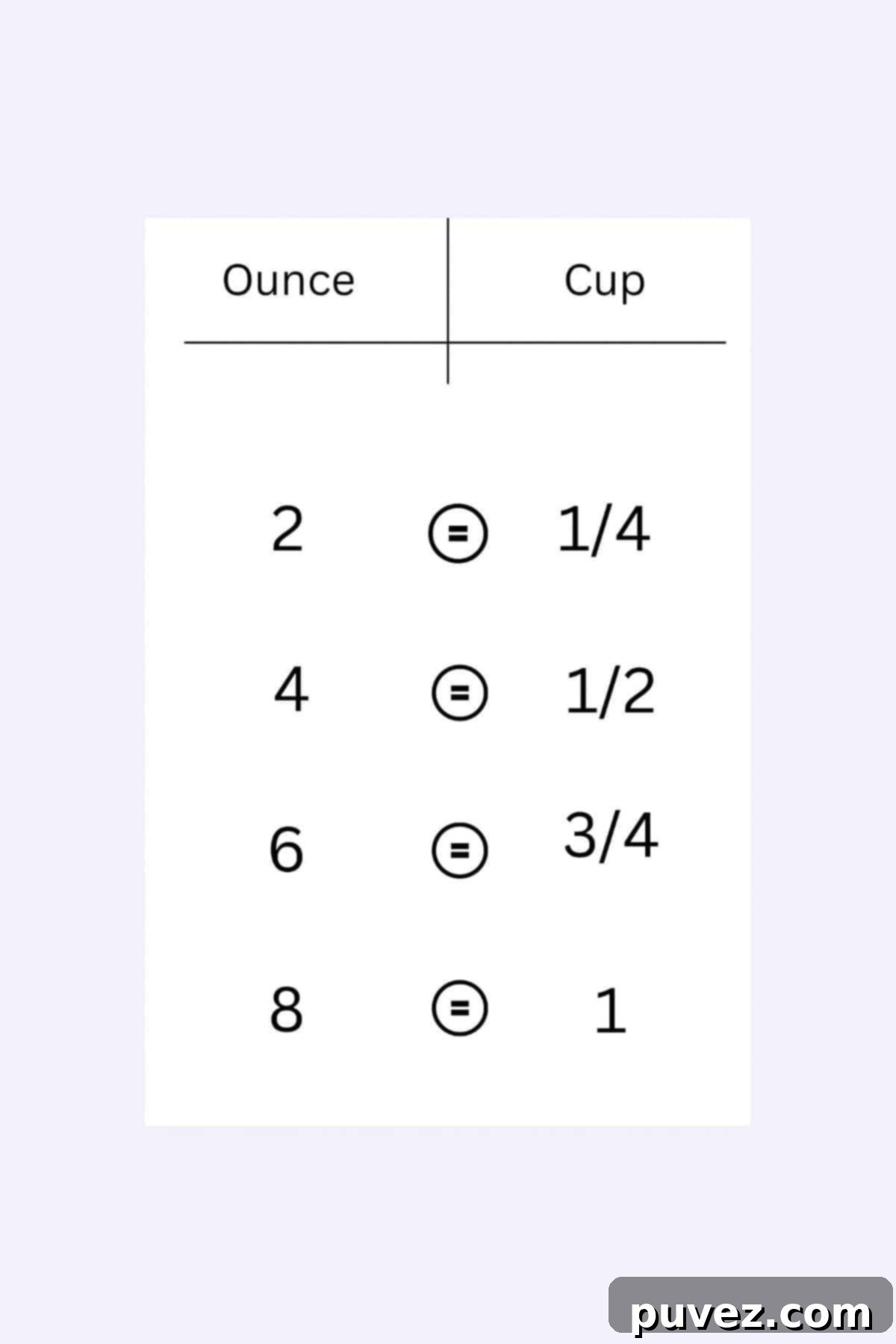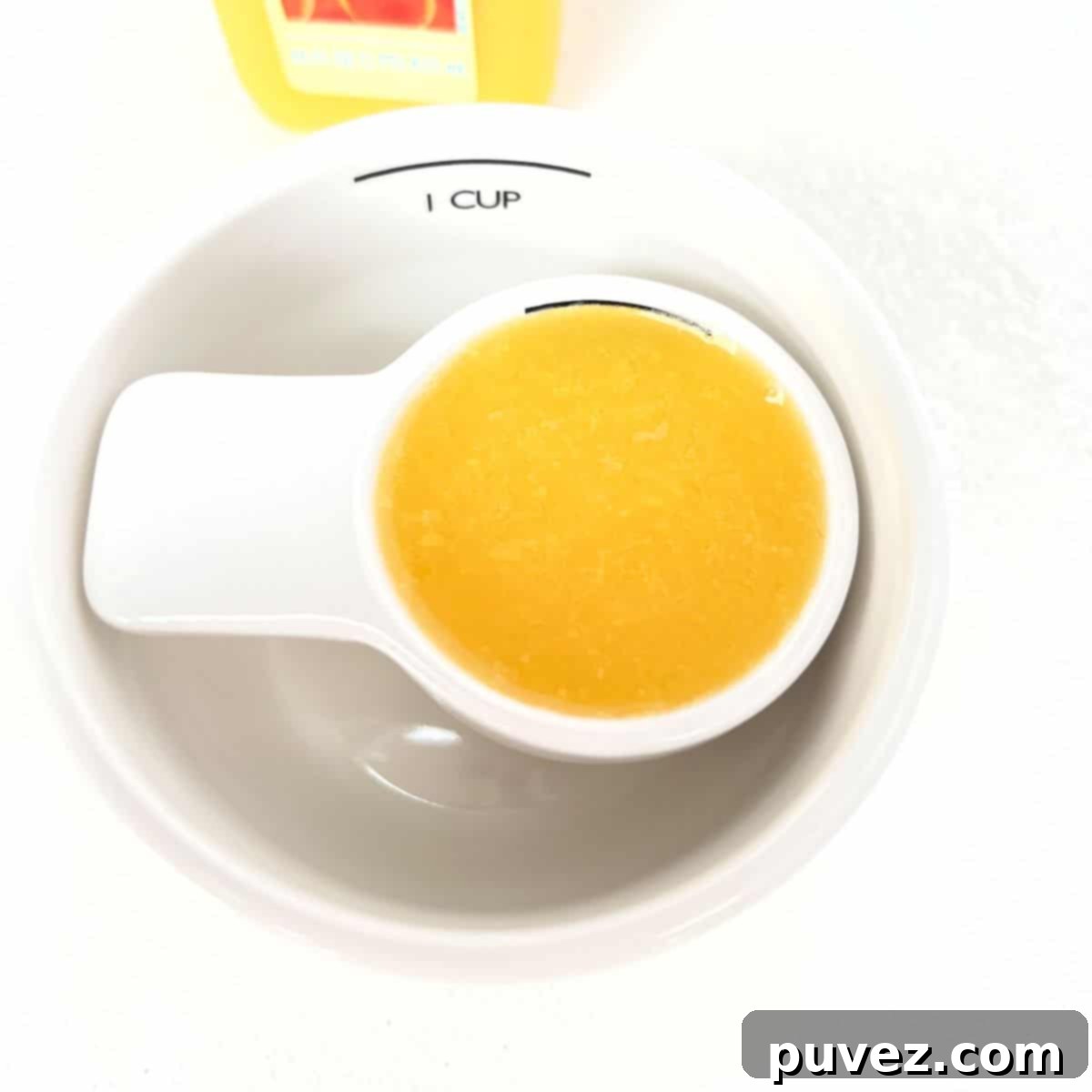Effortless Kitchen Conversions: How Many Ounces in a 1/4 Cup?
Navigating kitchen measurements can sometimes feel like solving a puzzle, especially when a recipe calls for a specific amount in one unit, and your measuring tools display another. A common question that arises for both novice and experienced cooks is, “How many ounces are in ¼ cup?” Whether you’re whipping up a delicate dessert or a savory marinade, precision is key to culinary success.
The straightforward answer is: there are 2 fluid ounces in ¼ of a cup. This simple conversion is a cornerstone of accurate liquid measurement in the kitchen. But understanding this basic fact is just the beginning. To truly master your recipes, it’s essential to delve deeper into the nuances of measurement systems, the difference between liquid and dry ingredients, and practical tips for flawless execution.

Whether you are measuring ingredients for a delicious marinade, wholesome energy bites, or delightful cupcakes, accurately measuring each component is paramount. There’s little more disheartening than having a recipe go awry because of a simple measurement mistake, especially when you’re pressed for time or new to the culinary world. Just like converting tablespoons to cups, taking an extra moment to confirm your measurements can save your dish from an unfortunate fate. This comprehensive guide is designed to clarify the conversion of ¼ cup to ounces and equip you with the knowledge for precise cooking and baking every time. Let’s dive in!
The Fundamental Conversion: ¼ Cup to Ounces
Tip #1: Unlock All Liquid Conversions by Memorizing the Basic Relationship. The easiest way to calculate fractions of a cup, such as how many ounces are in ¼ cup, ½ cup, or ¾ cup, is to first commit to memory the total number of ounces in one full cup. There are 8 fluid ounces in one standard cup. With this crucial piece of information, you can easily deduce that 2 fluid ounces are in ¼ cup (8 ounces / 4 = 2 ounces).
Understanding Measurement Systems: US Customary vs. Imperial
It’s important to recognize that measurement systems can vary. Primarily, you’ll encounter the US Customary (or US Legal) system and the Imperial system. The US Legal cup, which is what most household measuring cups in the United States refer to and what is commonly used for food labeling in the US, is the standard for recipes you’ll typically find.
The Imperial Cup, on the other hand, is the traditional English unit of volume, influenced by the metric system. While there are slight differences between these systems, for most home cooking and baking, the discrepancy is usually negligible and won’t significantly impact your recipes. This is particularly true if you consistently use the same set of measuring cups for all your ingredients.
For example, a US Legal cup equates to 240 milliliters (which is 8 fluid ounces), whereas an Imperial cup is approximately 250 milliliters (or 8.33 fluid ounces). These figures refer specifically to volume, not weight, a critical distinction we will explore further.
How to Accurately Measure ¼ Cup in Ounces (Liquid)
For everyday cooking and baking, when a recipe mentions ‘ounces’ for liquid ingredients, it almost always refers to ‘fluid ounces.’ Achieving accurate liquid measurements is straightforward with the right tools and technique.
- Choose the Right Tool: The most accurate way to measure liquid ounces is by using clear glass or plastic liquid measuring cups. These cups are designed with a spout for easy pouring and typically have clear measurement lines for both ‘cups’ and ‘fluid ounces.’
- Technique for Precision: To measure ¼ cup (or 2 fluid ounces), pour your liquid ingredient into the liquid measuring cup. Ensure you place the cup on a flat, level surface and bend down to eye level to read the measurement. This eliminates parallax error, where the reading appears different depending on your viewing angle. Fill until the liquid reaches the ‘2 ounce’ line.
- Alternative Method (Shot Glass): In a pinch, a one-ounce shot glass can be a makeshift measuring tool. To achieve ¼ cup (2 ounces), you would need to fill the one-ounce shot glass to its ‘one ounce’ mark exactly two times. While less convenient, it works if you don’t have a standard liquid measuring cup.
The Critical Distinction: Liquid Ounces vs. Weight Ounces
Tip #2: Remember, Ounces of Weight and Fluid Ounces of Volume Are Not Interchangeable. This is perhaps the most crucial concept in kitchen measurements. An ounce is a unit of weight, while a liquid ounce (fluid ounce) is a unit of volume. This means that 1 ounce of flour (by weight) will occupy a different amount of space (volume) than 1 fluid ounce of water.
How to Convert Ounces to Cups for Dry Ingredients
When it comes to dry ingredients, things get a bit more complex. Dry ingredients are most accurately measured by weight (grams or ounces) or by using dry measuring cups and spoons. It’s rare to find a standard home recipe that asks you to measure dry ingredients like flour or sugar purely by the ounce (weight) and then convert that to cups. However, professional baking and some international recipes often call for ingredients by weight.
If you encounter a recipe that specifies dry ingredients in grams (or ounces by weight) and doesn’t provide a cup equivalent, your best bet for accuracy is a kitchen scale. This tool is invaluable for precision, especially in baking where ingredient ratios are critical for texture and rise.
For example, 1/4 cup of all-purpose flour typically weighs around 1 ounce (by weight), but this can vary depending on how packed the flour is. In contrast, 1/4 cup of granulated sugar weighs more, around 1.75 to 2 ounces. This demonstrates why volume-to-weight conversions for dry goods are not universal and depend entirely on the ingredient’s density and how it’s measured (scooped vs. spooned and leveled).
Unless you’re a professional baker striving for scientific precision, or working on a highly sensitive bread or cake recipe, you likely won’t need to stress over converting dry ounces (weight) to cups for most everyday cooking. For the average home cook, a good set of dry measuring cups (designed to be leveled off) will suffice for most dry ingredients.
In summary, for dry ingredients, the most accurate method is to measure by weight using a food scale, or to use proper dry measuring cups for volume if weight isn’t specified.
Essential Conversion Notes and General Tips

Memorizing the core conversion (8 fluid ounces in one cup) simplifies many other calculations:
- Scaling Recipes: If you remember that there are 8 fluid ounces in one cup, applying this knowledge to larger quantities becomes simple division or multiplication. For instance, if you’re making a large batch of soup for an event and the recipe calls for 112 ounces of water or broth, simply divide 112 by 8 to get the number of cups (112 / 8 = 14 cups).
- Converting Back to Cups: If a recipe specifies 2 fluid ounces of a liquid and you only have cup measurers, divide 2 by 8 (since there are 8 ounces in one cup). This equals 0.25, which is ¼ cup.
- Beyond Cups: Pints and Quarts: For even larger quantities, it’s beneficial to know that there are two cups in one pint, and two pints (or four cups) in a quart. This knowledge is especially useful when doubling or tripling recipes, or when dealing with bulk ingredients.
- Practical Usage with Storage: You’ll often see ‘quarts’ mentioned with food storage bags or containers. For example, when freezing fruits like berries or bananas, many people opt for ‘quart-sized’ freezer-safe Ziploc bags. Knowing these larger conversions helps with meal prep and storage.
- Utilize Simple Tools: For any quick arithmetic, a basic calculator – like the one on your smartphone – is your best friend for effortless cups conversion.
Dietitian Mom Tip: Making Math Fun in the Kitchen!
So often, kids ask, “Why do I need to learn math? I’ll never use it in real life!” Well, the kitchen offers a perfect counter-argument, full of practical applications!
Involving your children in measurement conversions is a wonderfully engaging and practical way for them to practice essential math skills. Even if you already know the answer to “how many ounces are in a quarter of a cup,” challenge them to figure it out themselves. This hands-on learning can make abstract math concepts tangible and exciting.
For younger children just beginning with division, pose a question like: “If there are 8 ounces in one cup, how many ounces are in a quarter of a cup?” For older kids who are more adept at looking up information, you could say: “This recipe requires 4 ounces of milk. We only have a one-quarter cup measurer. Can you figure out how many one-quarter cup measures we need to get 4 ounces?” This not only reinforces their math skills but also builds their confidence and culinary independence.
Frequently Asked Questions About ¼ Cup Conversions
For cream cheese, which is a semi-solid ingredient, 2 ounces of cream cheese equals ¼ cup. This is generally consistent with its density.
Measuring shredded cheese can vary quite a bit depending on its type and how finely it’s shredded. The most accurate way to measure cheese for critical recipes is by weight. However, if you don’t have a food scale, you can refer to general guidelines. According to a guide provided by Wisconsin Cheese:
There are about 1.5 ounces (by weight) in ¼ cup of soft or crumbly cheese (like feta or goat cheese), approximately 1 ounce (by weight) in ¼ cup of semi-hard cheese (like cheddar or mozzarella), and around 0.75 ounce (by weight) in ¼ cup of hard cheese (like finely grated parmesan). This highlights the difference in density.
Since water is a liquid, its volume-to-fluid ounce conversion is straightforward and standard: There are 2 fluid ounces in ¼ cup of water.
Butter is another ingredient commonly measured by both volume and weight. Fortunately, for standard stick butter, the conversion is consistent: There are 2 ounces (by weight) in ¼ cup of butter. This is also conveniently marked on most butter wrappers.
For ingredients like chopped walnuts, the density can vary. However, a general estimate is that there is about 1 ounce (by weight) in ¼ cup of walnuts. For precise baking, measuring by weight with a scale is recommended.
We hope this comprehensive guide has fully answered your question of “¼ cup is how many ounces?” Understanding these fundamental kitchen conversions is a stepping stone to becoming a more confident and capable cook or baker. With these tips, you’re well-equipped to tackle any recipe with precision!
For more valuable nutrition tips and a collection of easy, kid-tested, and parent-approved recipes, be sure to follow me @carrots.and.cookies on Instagram!
